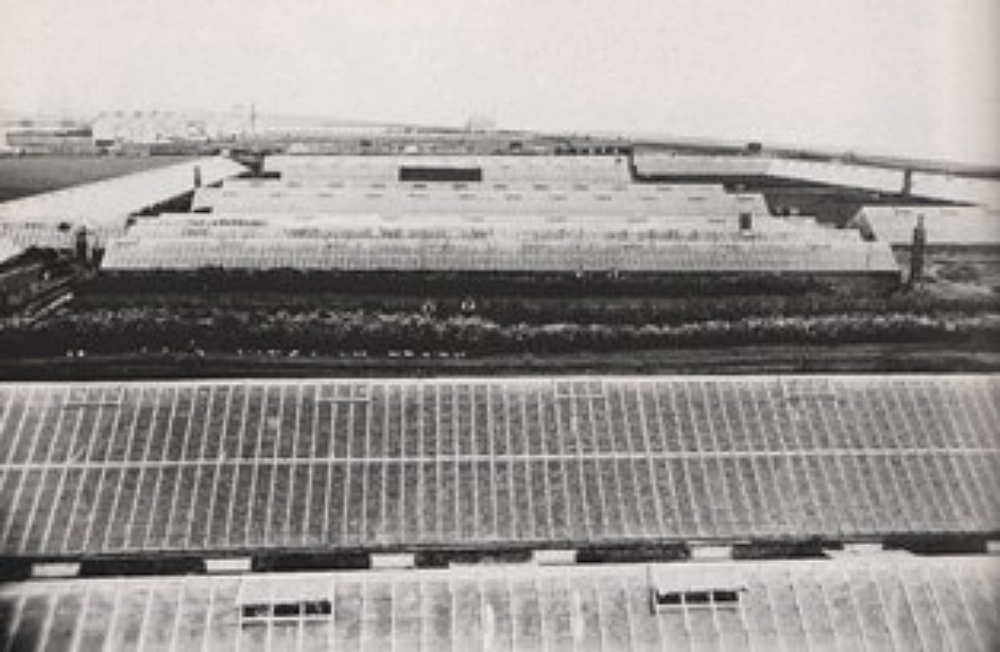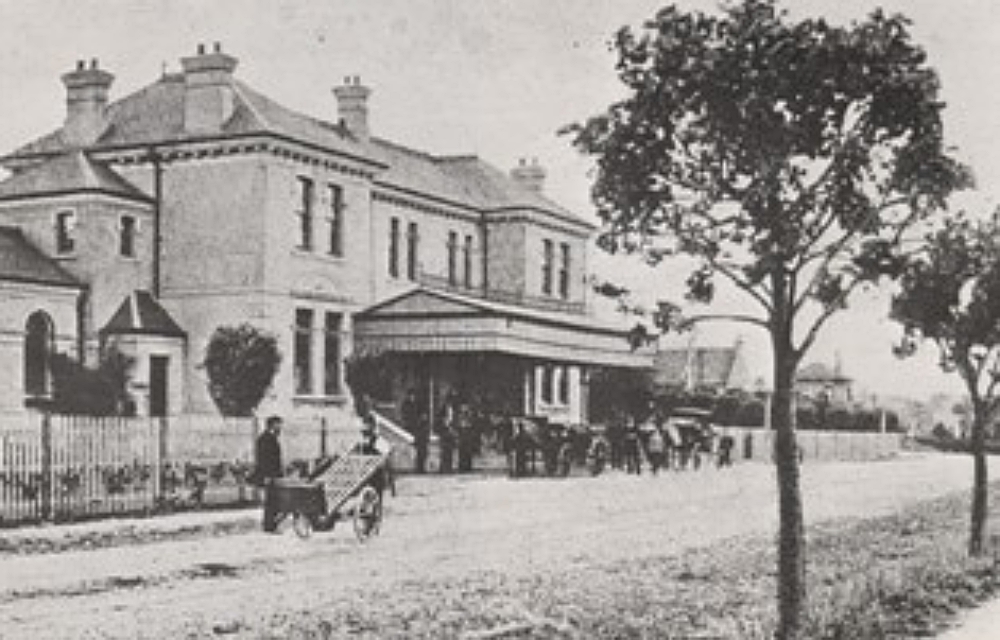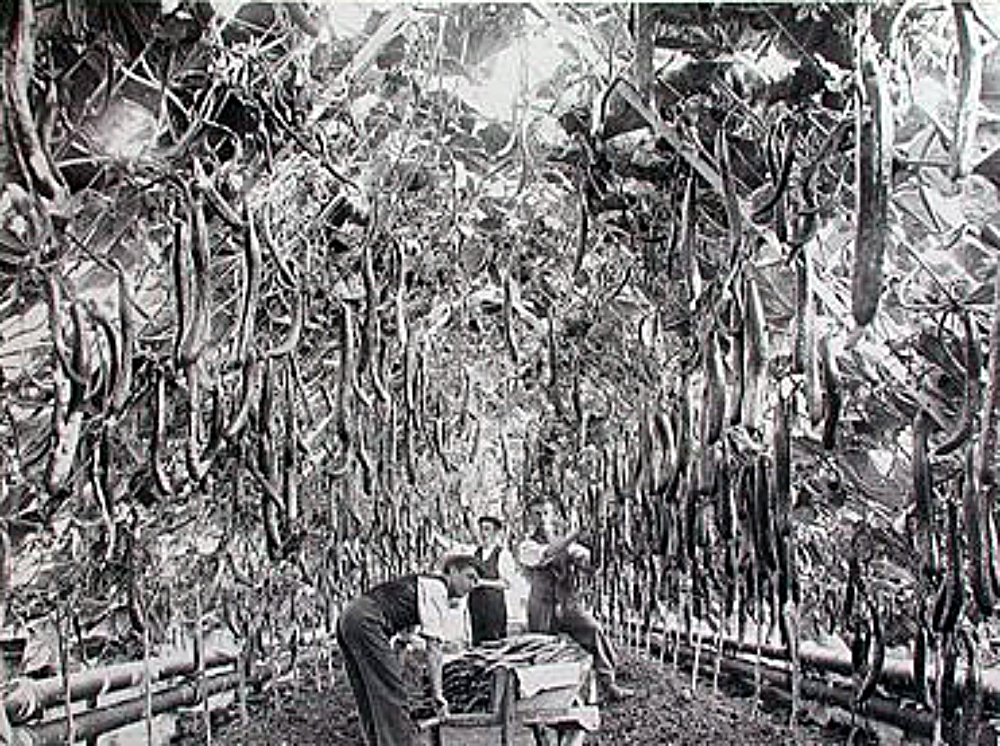Land of tomatoes
EDWARDIAN countryside author E.V. Lucas, in one of several books about Sussex, recorded that the first tomato he ever saw was at Worthing in the late 1800s. By the time of writing (1904) he was able to add: “Worthing is now the centre of the tomato growing industry, with miles of glasshouses on either side of the town.”

Worthing’s rise owed much to the success of its luscious red tomatoes but that the part they played has never been given the prominence it deserved.
According to a Victorian observer, the pioneer tomato growers of Worthing, were “greatly daring” when they began their enterprise in 1870.
Prior to that time, suitable growing land in the area was changing hands for barrels of brandy, at a favorable exchange rate of five gallons per acre! But by 1900 it had shot up to £500 an acre for the most favored spots and so successful did the trade become that the proximity of a railhead -in this case, at West Worthing – was an important factor.
It was essential for sending the tomatoes to London’s all-important Covent Garden market for onward distribution to a devouring world.
Fame of the Worthing tomato spread so rapidly and widely that Holland and Belgium soon began sending young apprentices to learn from Worthing growers, before launching similar industries in their own countries.
Less that a century later, using more innovative techniques, the Dutch would be beating the Worthing growers in an increasingly cost-conscious marketplace by undercutting rapidly increasing UK production costs.
Another reason contributed to the gradual demise of the native English tomato growers after World War Two – the increasing pressure from land-hungry building developers catering for the rising popularity of Worthing as a retirement resort.
It resulted in most of the Worthing tomato growers selling their land to building developers and retiring happy.
With the benefit of hindsight it seems that one man can be credited with forging Worthing’s inexorable link with the ripe tomato.
He was a local doctor with a private medical establishment in the town. After purchasing some of the glass from the Victorian Great Exhibition in Hyde Park, when it was dismantled in 1852, he erected a greenhouse at Broadwater and began growing grapes and tomatoes for sale.
Another pioneer of tomato growing was the owner of a local private school in the mid-1800s. Great secrecy was observed in those days about methods of culture and when interrogated by a too inquisitive lady, the schoolmaster answered her question “What manures do you use?” with a curt `Brains, madam, brains!”
The small red fruit of the (tomato) vine made Worthing internationally famous by the end of the 19th century, though, by a strange irony, it has now all but disappeared from the town:

Back in the late 1880s, several of my ancestors, as professional growers, were involved in the development of the Worthing tomato industry. They were understandably proud that the Worthing tomato became THE standard against which all others were judged. Even the French, admiring their unrivalled taste, used to buy them in great quantities.
If proof positive was needed of the worldwide fame achieved by the Worthing tomato, it was literally handed to me on a plate during a visit to Hong Kong in the early 1960s.
Browsing between the over laden stalls of the bustling food market in Kowloon, the notice shone out like a beacon. I read it with astonishment. “Best Worthing tomatoes” it declared. Wow!
I quizzed the stall keeper. “Are you sure they’re genuine? Were they really grown in my home town on the other side of the world?”
“Flown here yesterday. Vellee, vellee good” he assured me.
In those days, the air freighting of food around the world was in its infancy because of the high cost. If it couldn’t survive a long sea journey it usually wasn’t exported.
But canny Chinese merchants had learned from expatriates working in Hong Kong about the unbeatable flavour of Worthing’s best-known greenhouse product and they were only too happy to fulfill a demand the moment costings made their importation practical. So perfect is the climate in this part of West Sussex for growing tomatoes that today the Dutch are back in force, owning and running major businesses that produce some of the world’s best tomatoes – in acres of greenhouses only a few miles to the west of Worthing.
Cucumbers!
